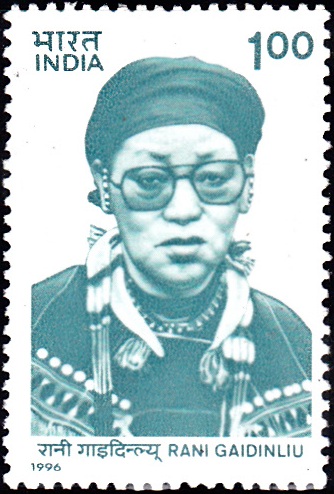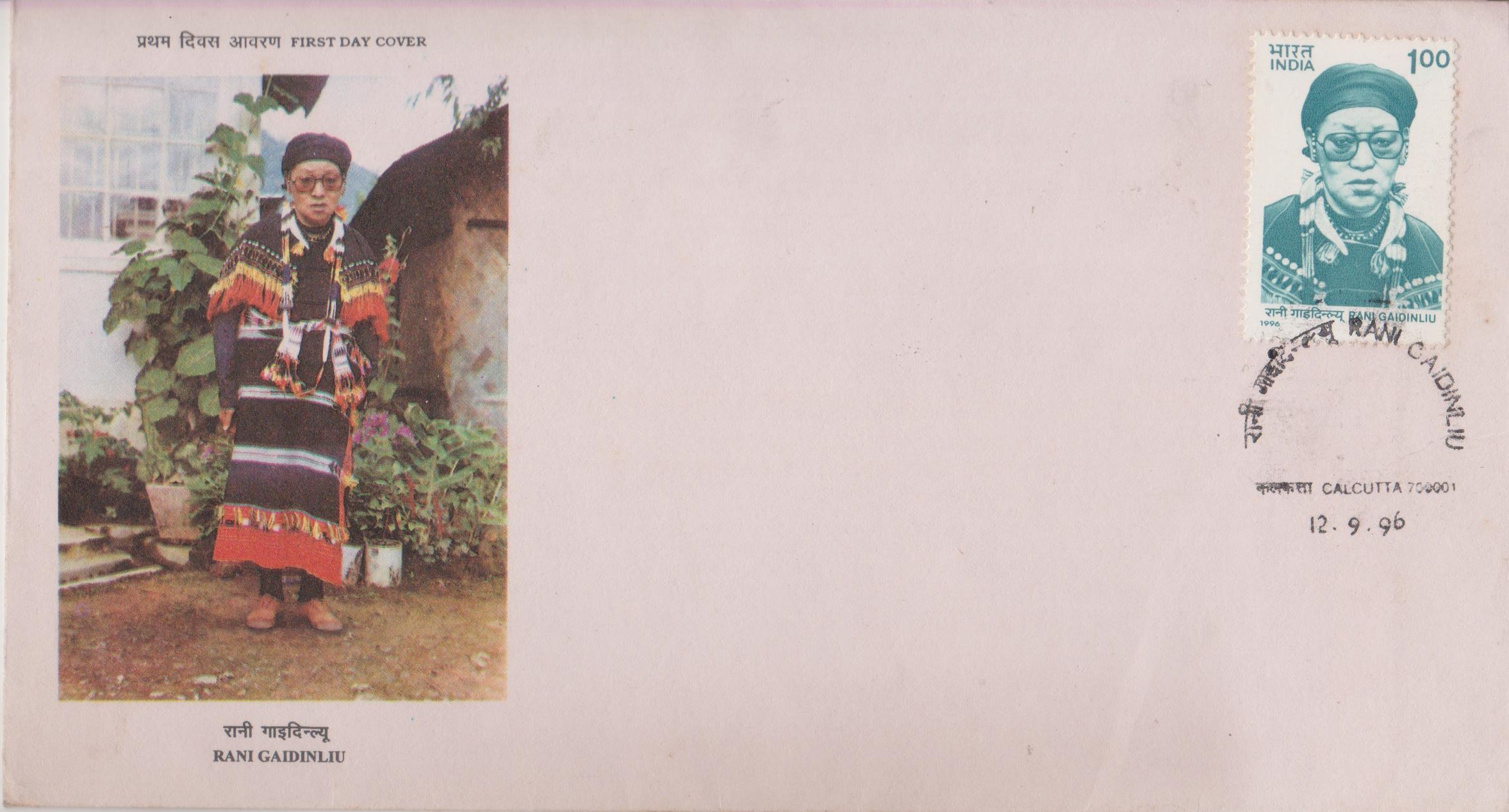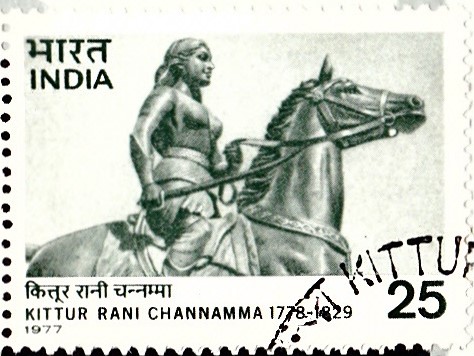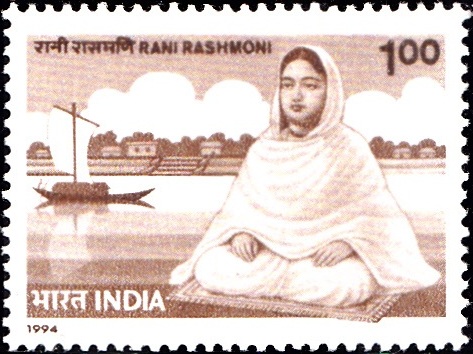
Rani Gaidinliu
A commemorative postage stamp on Rani Gaidinliu (Queen of the Nagas), daughter of the hills :

 Issued by India
Issued by India
Issued on Sep 12, 1996
Issued for : Department of Post feels happy to bring out a special postage stamp to honour this great freedom fighter.
Credits :
Design for Stamp & FDC : Rani Gaidinliu Foundation
Cancellation : Smt. Alka Sharma
Type : Stamp, Mint Condition
Colour : One
Denomination : 100 Paise
Overall size : 4.06 x 2.73 Cms.
Printing size : 3.71 x 2.38 Cms.
Perforation : 13 x 13
Paper : Imported un w/m Adhesive Gravure Coated Stamp Paper in Sheets 50.8 x 57.5 cms. width
Number of Stamps Printed : 0.4 Million
Number per issue sheet : 40
Printing Process : Photogravure
Printer : India Security Press, Nasik
Name : Gaidinliu
Born on Jan 26, 1915 at Nungkao, Manipur, British India
Died on Feb 17, 1993 at Longkao, Manipur, India
About :
- Rani Gaidinliu was born on January 26, 1915 at Nungkao village, district Tamenglong of Manipur State. Her political career started when she was barely thirteen years of age. She came in contact with the well-known political and spiritual leader of the Nagas, Haipau Jadonang who launched a movement to drive out the British from Manipur. When Jadonang was hanged by the British on 29 August, 1931, Gaidinliu took over his mantle and exhorted her followers to fight against the British, saying “We are a free people, the white men should not rule over us, we will not pay house tax to the Government, will not obey their unjust laws like forced labour and compulsory poster subscription“.
- Her movement had socio-religious and political aims. She wanted to preserve the traditional Naga culture. Her political programme was strongly influenced by the preachings of Mahatma Gandhi. The British Government tried to suppress her movement by carrying out house to house search for arresting her, which forced her to change her name to “Dilenliu“. While constructing a wooden fortress to fight against the British, the British army made a surprise attack on her position and captured her on 17 October, 1932. Thereafter she was sentenced to life imprisonment.
- In 1937, when Pandit Jawahar Lal Nehru visited Assam, he learnt about Gaidinliu and her movement and was impressed by her indomitable spirit and struggle against the British Government. Shocked that the young girl of 22 suffered so much he commented, “…..what torment and suppression of spirit they have brought to her, who in the pride of her youth dared to challenge an empire.“ He, while acclaiming her valour and her achievements, described her as the ‘Rani of the Nagas‘. He championed her cause in British Parliament through Lady Astory to obtain her release, but in vain. She was finally released from jail by the Indian Government only after Independence, after spending about 15 years in jails of Assam and Manipur. During these years of her prime of youth, she remained singularly located and encountered a train of tortures, hardships and difficulties. She was perhaps the only woman freedom fighter who spent more than 15 years in British jails.
- Rani Gaidinliu continued to struggle for a place of honour for her people in the political set up of free India. She was honoured with Tamrapatra in 1972 and with Padma Bhushan in 1981. A freedom fighter, a political leader and a social reformer, she was also a towering spiritual personality. She breathed her last on February 17, 1993 at her native village in Manipur. Pandit Nehru once wrote “A day will come when India also remembers her and cherishes her“.







